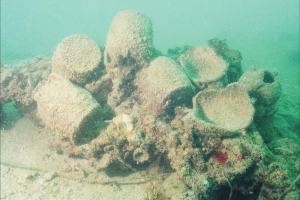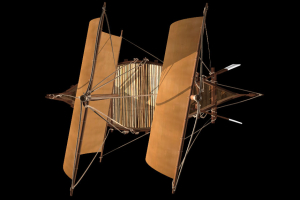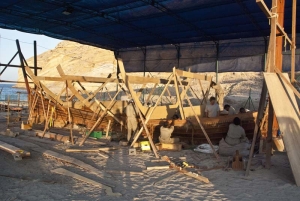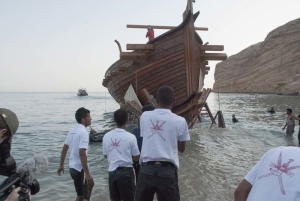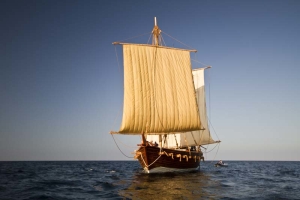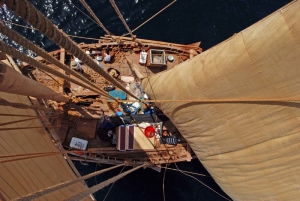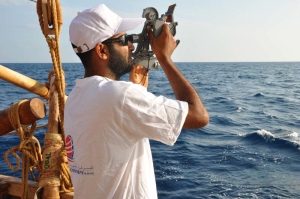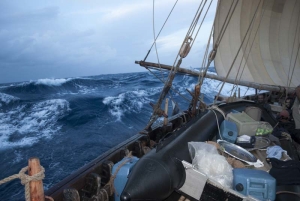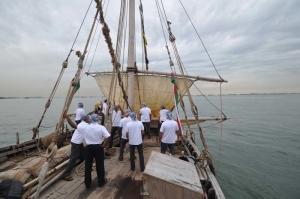The story of the Jewel of Muscat
This is the story of how the Jewel was built, and of the adventures that took place during her historic voyage. If you’d like to learn more about the events leading up to the project and about the modern state of Oman, see the Background pages.
The history of Jewel
The story of Jewel of Muscat goes back centuries. But in recent times the story begins around 1998, when fishermen off the island of Belitung in Indonesia began pulling up pottery in their nets.
A royal gift
His Majesty Sultan Qaboos bin Said, Sultan of Oman, offered his blessings and support with a vision to explore the possibility of recreating such a ship in the spirit of Oman’s proud maritime heritage.
Designing Jewel
Dr Tom Vosmer, a maritime archaeologist with a long-standing interest in Oman’s maritime heritage, was appointed as construction director. Over a period of months in 2007 detailed plans and designs for the ship, based on the wreck, were prepared.
Starting the build
At the fishing village of Qantab, just along the coast from Muscat old town, a shipyard was prepared and an international and Omani team of archaeologists, carpenters and ropeworkers was recruited to take on the difficult task of building Jewel of Muscat.
Launching the ship
The process of launching Jewel was a desperate race against time to have everything ready for the high tides needed to float her into the sea safely.
Preparing for sea
Jewel completed her first sea trial off the coast of Oman near Muscat. In the following weeks, Captain Saleh and his crew faced up to the challenge of learning how to sail a 1,000-year-old ship with traditional rigging and heavy canvas sails.
Setting sail
At exactly 12 noon on February 16th or the 1st of Rabie Al-Awwal 1431 AH, Jewel slipped her moorings to begin the first leg of her epic voyage to Singapore. Large crowds cheered her on her way as she was given a spectacular send off.
Life on board
Jewel and her crew of 17 settled down to the task of sailing the ship some 1,200 miles to Kochi in southern India. With no engine, the ship was entirely dependent on her sails.
Following ancient routes
During the voyage the crew used traditional 9th-century navigation tools such as the kamal, as well as modern techniques to further our understanding of ancient navigation techniques.
Arrival in India
After 28 days at sea, Jewel arrived safely in Cochin, surrounded by welcoming ships. Dignitaries from Oman and India greeted the crew before dancing and celebrations broke out on the quayside.
Battling heavy storms
Only days out from port, Jewel ran into fierce storms with winds up to 43 knots. Once the storm had passed, the crew discovered that one of the masts had cracked.
Journey’s end
The arrival in Georgetown was a huge relief for the crew and marked a new phase in the voyage. Jewel was welcomed with friendship and generous hospitality before she set sail on the last two short legs of her voyage.
A lasting legacy
In October 2011 Jewel of Muscat went on permanent display to the public in the Maritime Experiential Museum in Sentosa Resorts World, Singapore. She forms part of a larger exhibition that tells the story of the Maritime Silk Route.

